Hello everyone, in this quick article I will show you exactly how I started a brand new raspberry patch on my allotment using bare root raspberries.
What Are Bare-Root Raspberries?
Bare root is a term used for how the raspberries will be delivered to you. It is a common way to deliver dormant plants over the winter.
The name bare root comes from the fact that the roots will be bare, ie, there will be no soil or compost around them. As the plants are dormant, this won't affect them, and although they may appear to be just a stick, the plant is perfectly fine.
This allows for the plants to be cheaper as they are easier to store and ship without all that compost!
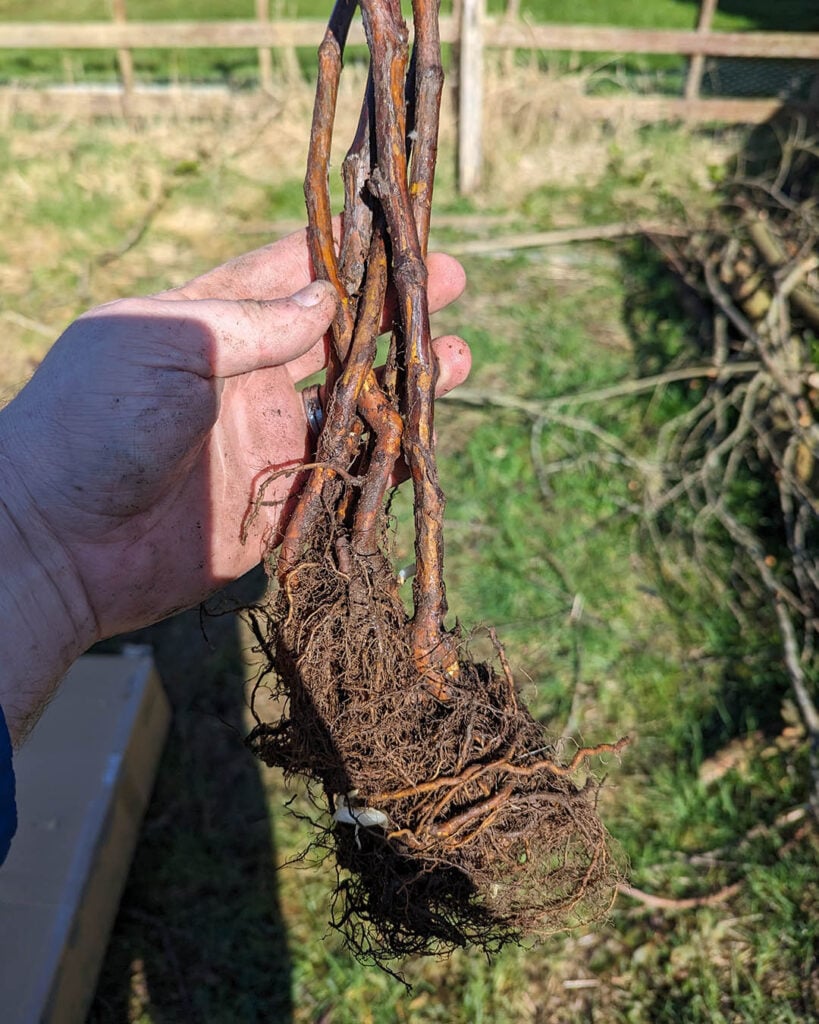
When To Plant
There are two times suitable for planting raspberries: autumn and spring. I prefer to plant in early spring as your plants won't have to be stood outside during the worst months of winter.
March-April is the perfect month for me to plant my raspberries, and that is exactly what I am doing right now!
Secret 1
If you can’t plant straight away, keep the roots moist by wrapping them in damp newspaper or cling film and storing them in a cool, frost-free place (like a shed or garage).
Types of Raspberry
There are two distinct types of raspberry: summer-flowering and autumn-flowering. The difference isn't just when they fruit, but also how they grow and how you need to look after them.
Summer fruiting raspberries flower and fruit on last year's growth - which is why they fruit earlier in the year.
Autumn fruiting raspberries flower and fruit on this year's growth - which is why they fruit later in the year. (They will also flower on last years growth - you can take advantage of this when you prune to get to harvests in one year!)
If you're a relatively new gardener, I recommend starting with autumn raspberries; they are easier to care for and grow. Autumn fruiting raspberries tend to provide a smaller harvest, but over a more extended period, summer fruiting ones crop heavily, but only for a couple of weeks.
Also, if you plant autumn fruiting ones right now, you still have a chance of getting an okay harvest this year. If you plant summer fruiting ones then you will get almost no harvest in the first year.
Secret 2
When planting, make sure the roots are well spread out in the planting hole.
Plant so the old soil line on the cane (you'll usually see a slight colour change on the stem) is at or just below the surface.
How To Plant
No matter which type you are planting, the steps are the same. To begin you want to soak your bare roots in a bucket of water for an hour or two, this just helps rehydrate them and wake them up from their long slumber!
Next, you want to dig a medium hole where you are going to plant your raspberry.
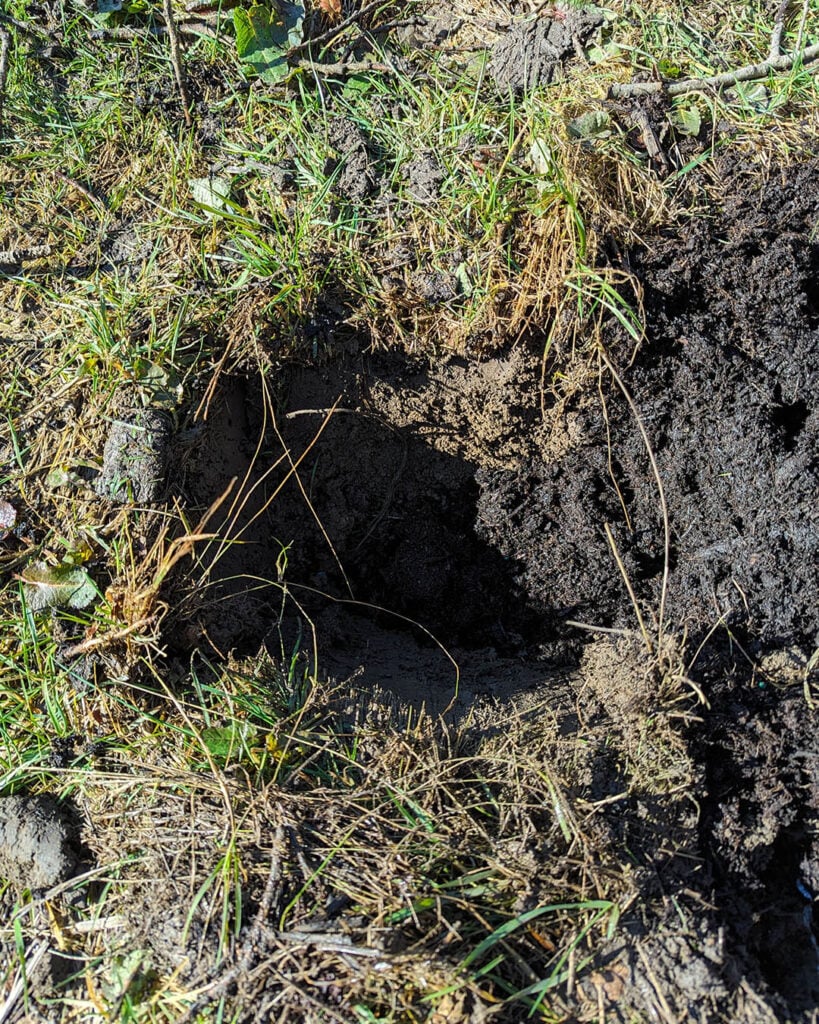
I am digging straight into the grass as you can see, I'm not too worried about this as I am digging a lot of the grass out, and then I will be adding a thick mulch of woodchips over the top.
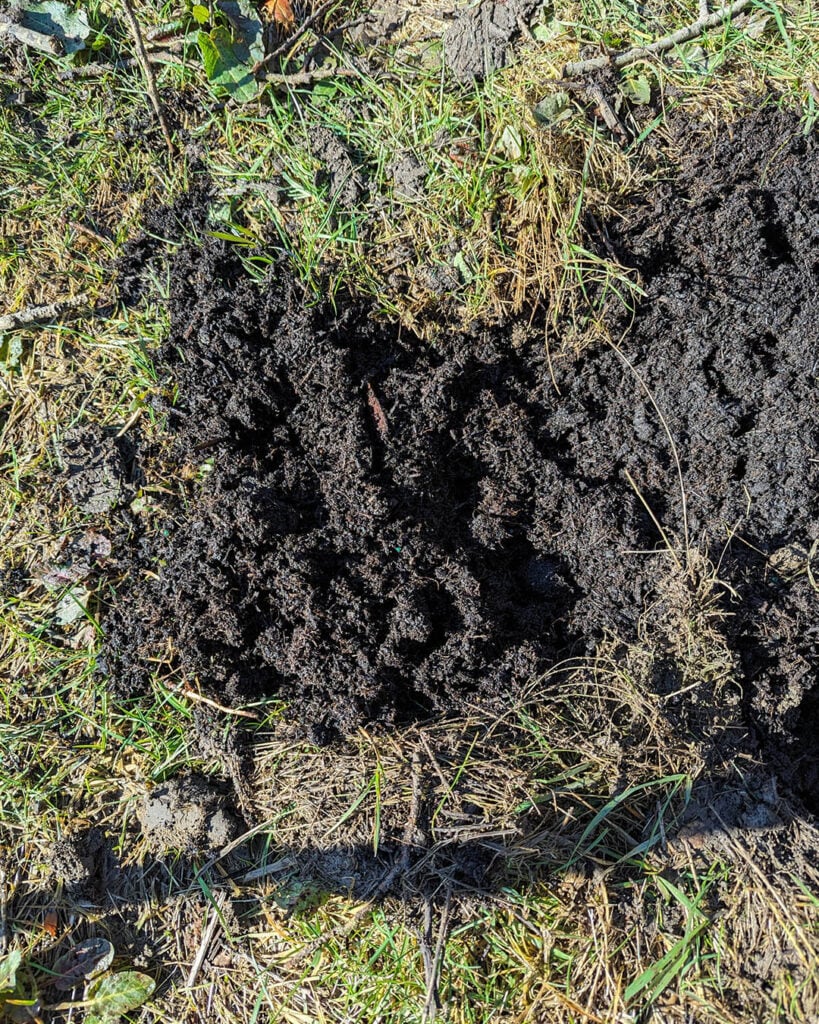
You then want to backfill the hole with fresh compost.
Secret 3
Space them at least 45–60cm (18–24 inches) apart within rows, and leave about 1.5–2m (5–6 feet) between rows if you’re planting multiple rows.
Crowded raspberries lead to poor airflow, fungal diseases, and smaller crops.
I am actually using a mix of ericaceous and regular compost because raspberries prefer their soil slightly acidic but not overly so. Now this is probably overkill and you will be fine with regular compost, but I was at the garden centre and thought I might as well!
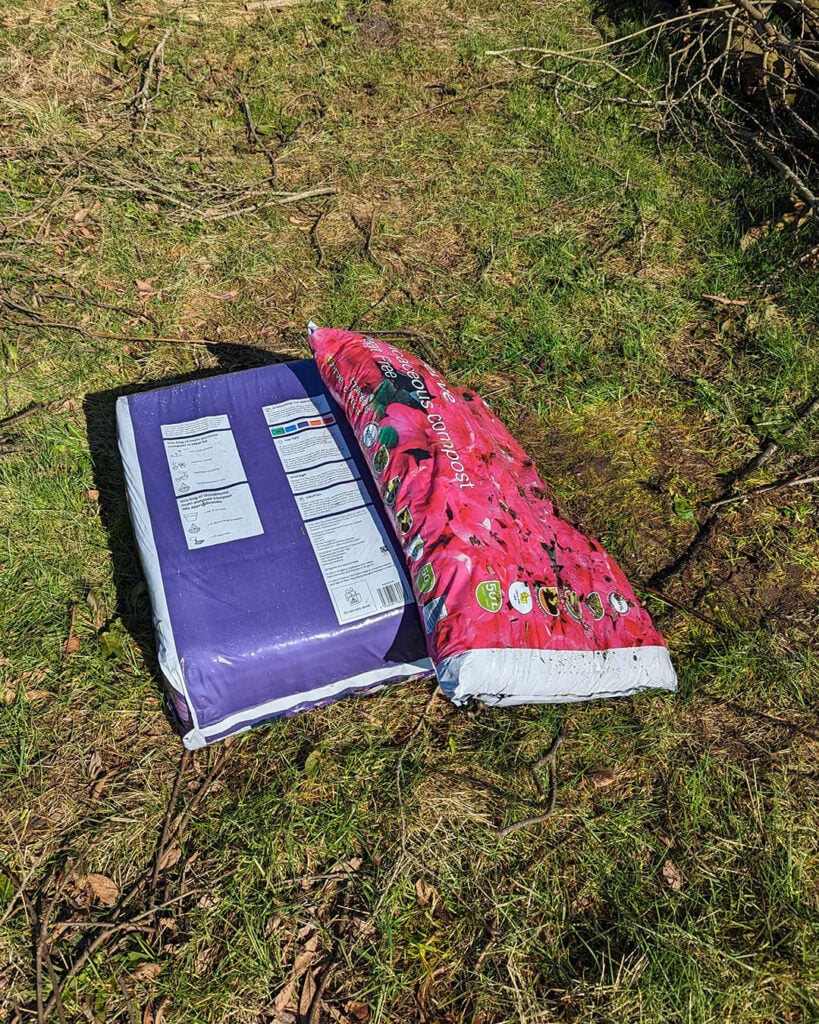
The mix I am using is 4:1, 200L of regular compost to 50L of ericaceous.

Once your new compost is in the hole, you want to make a small hole in it with your hands to pop the raspberry into.
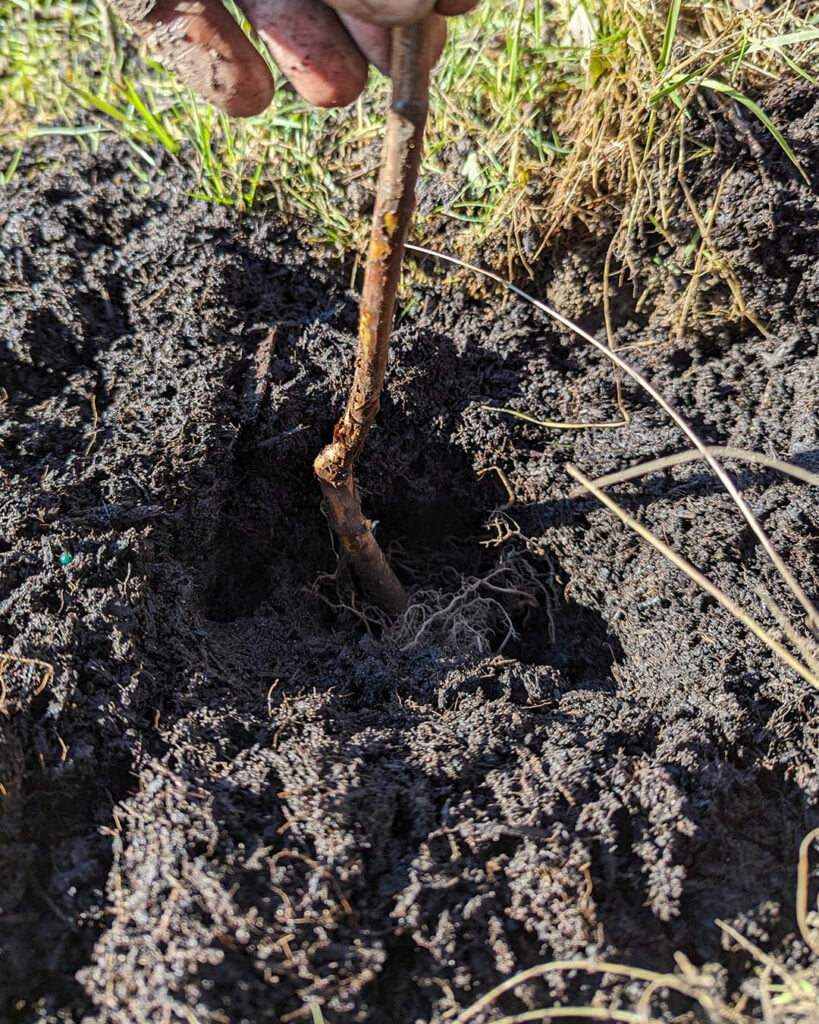
Make sure you dig it wide enough so that you can get all of the roots in.
In regards to depth you can go quite deep with raspberries as a lot of the growth will come from new side shoots underground. If you have an obvious pruning point - like the kink on mine then don't bury the plant below this.
Now you want to continue backfilling with your new compost.
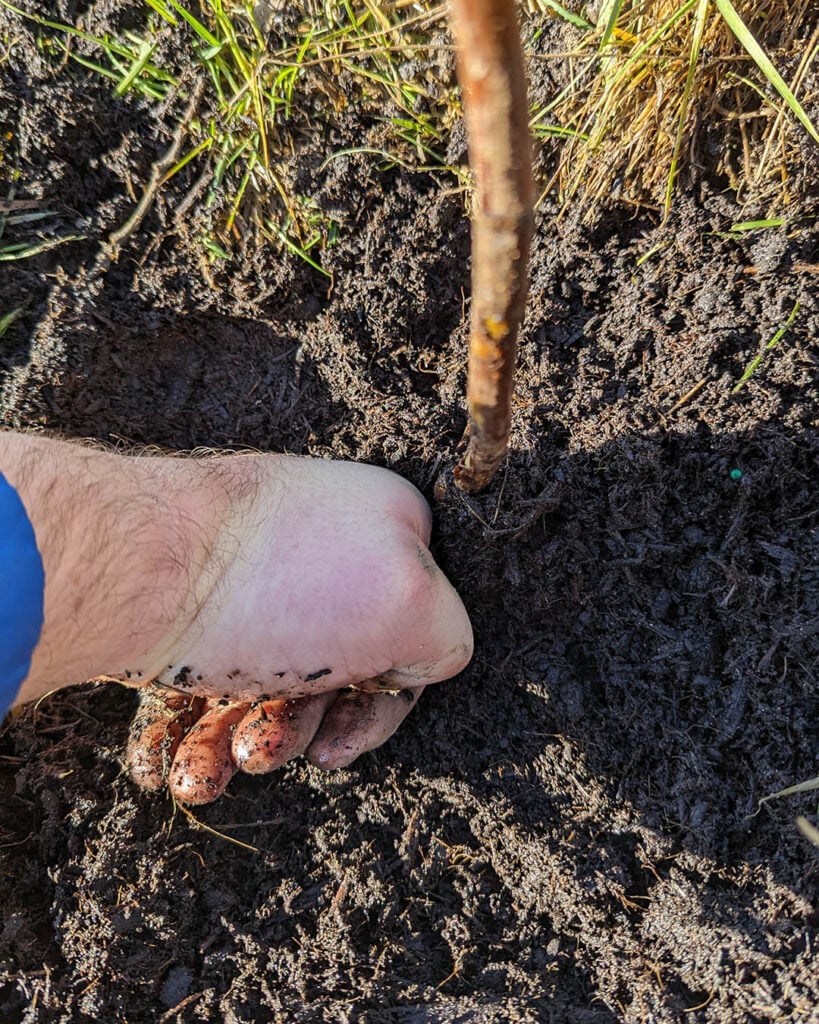
Once the plant is in, then you want to firm it down strongly, I just use my fist for this. While you are doing this make sure the cane is staying straight.
Once you are done, you might water the plant, but this depends on the weather. It has been so wet this winter that i wont be watering mine - the soil is plenty wet enough already.
Secret 4
Give them a good soaking right after planting to settle the soil around the roots.
Then add a layer of mulch (like well-rotted manure, compost, or bark chips) to keep moisture in and suppress weeds.
Bare-root plants can dry out quickly until they properly establish, so mulch really helps!

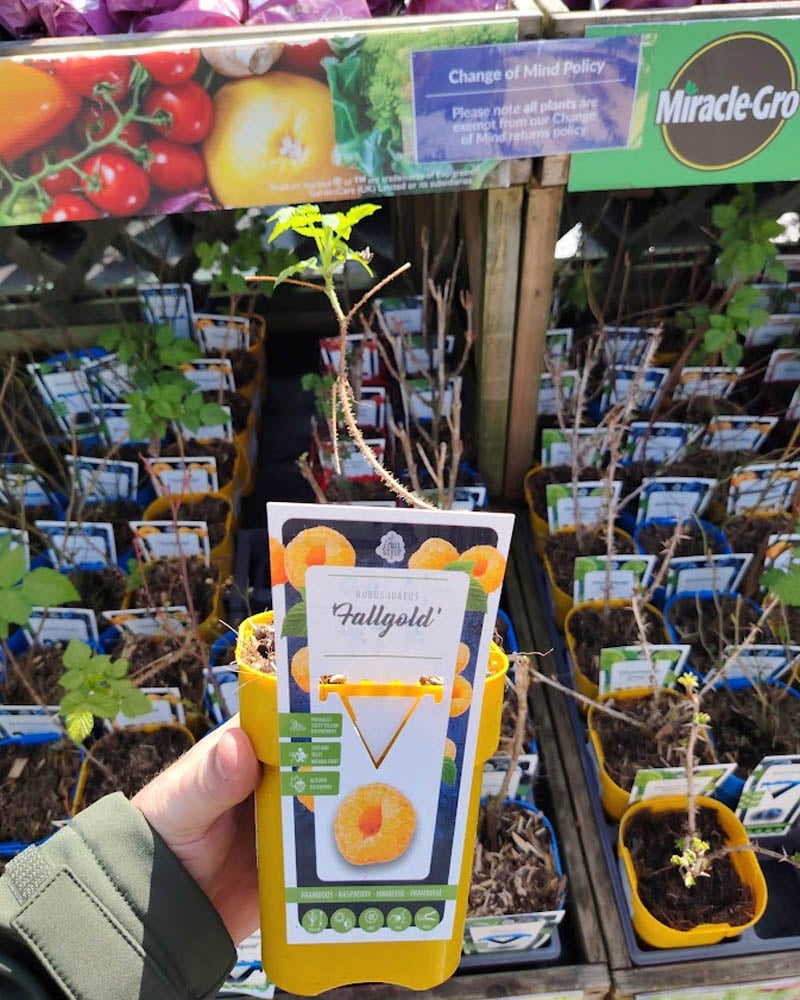
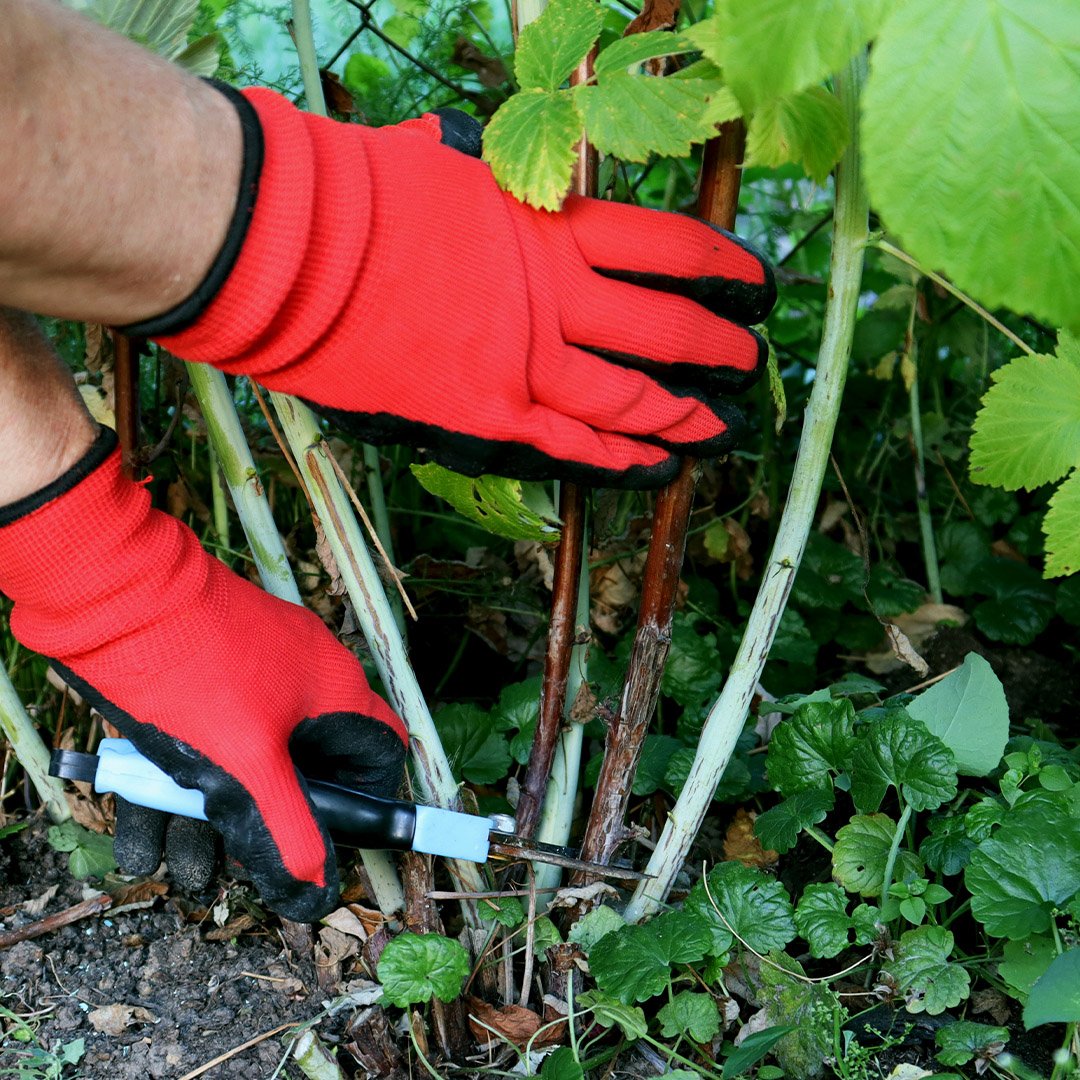
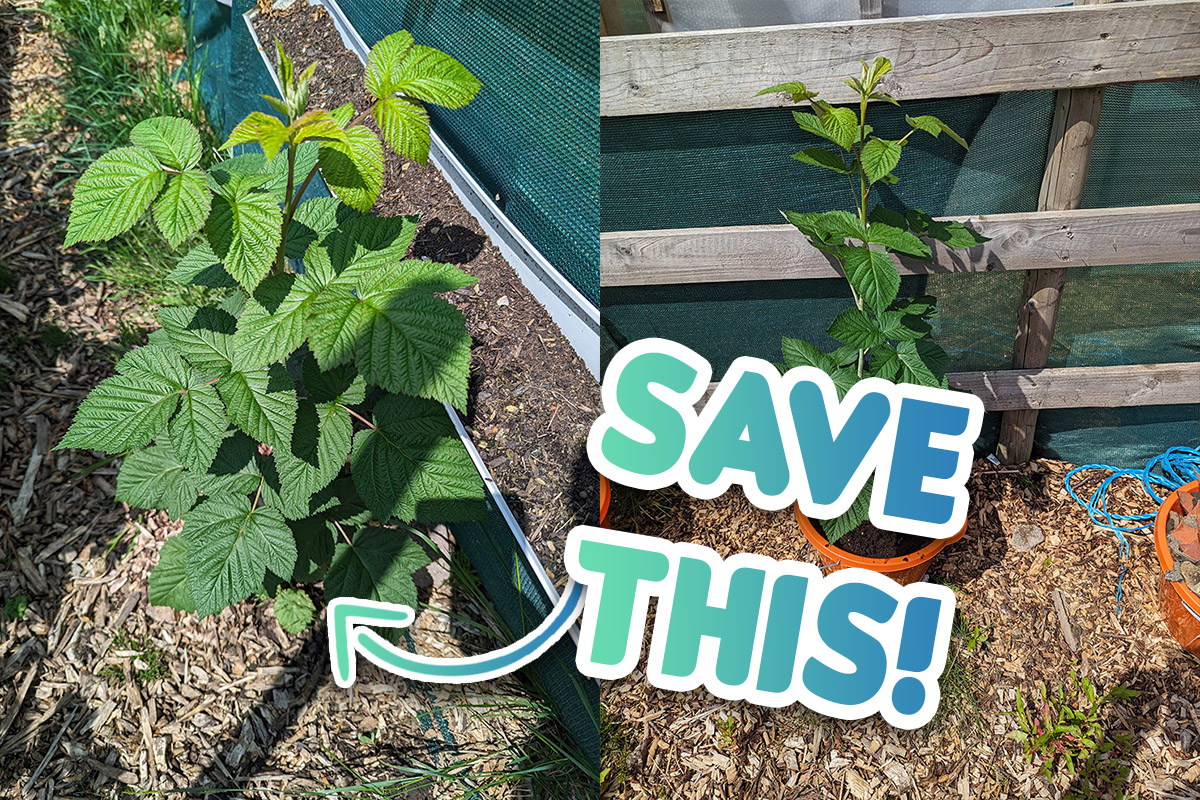

Nancy Spencer says
when is a good time to move tame blackberries?
Daniel says
right now! 🙂